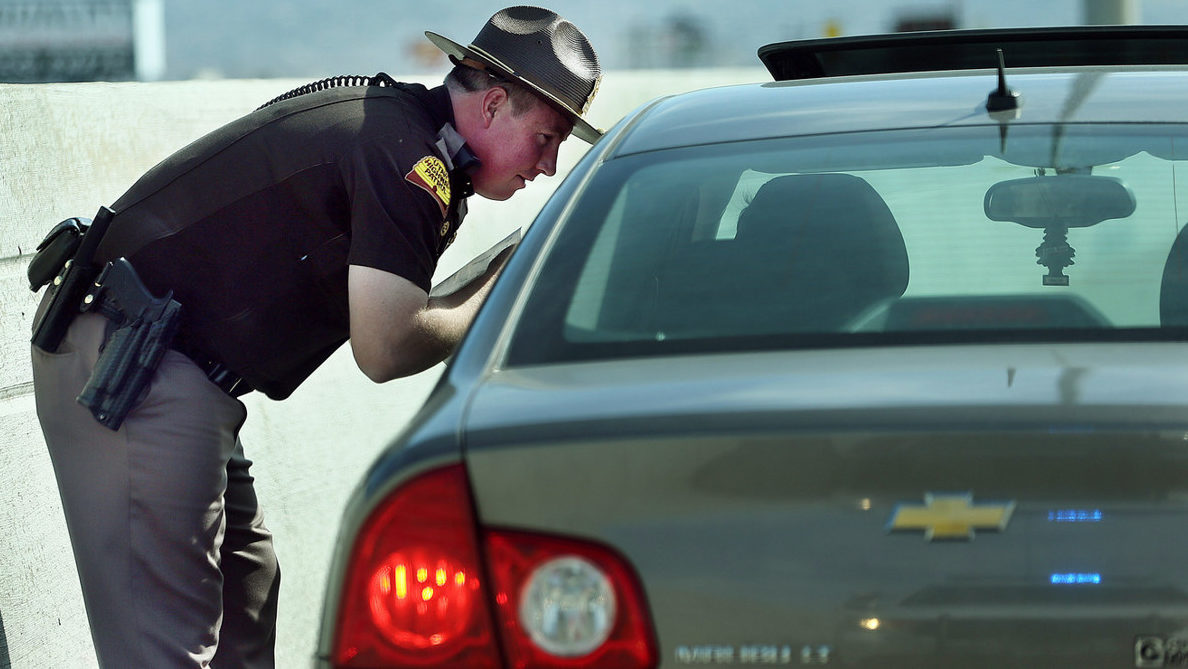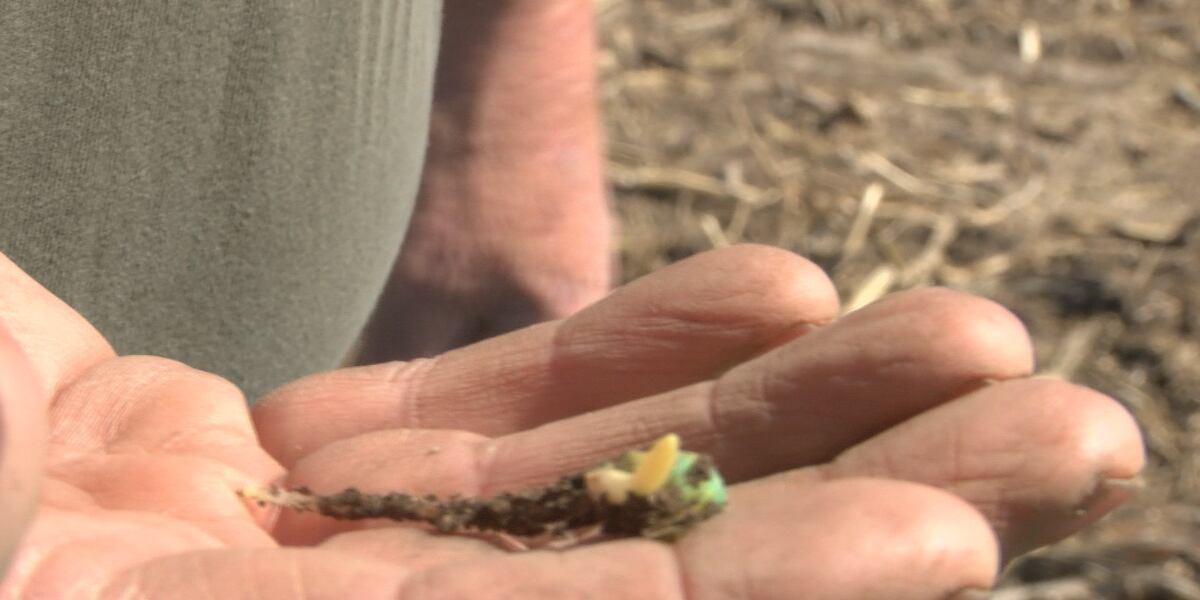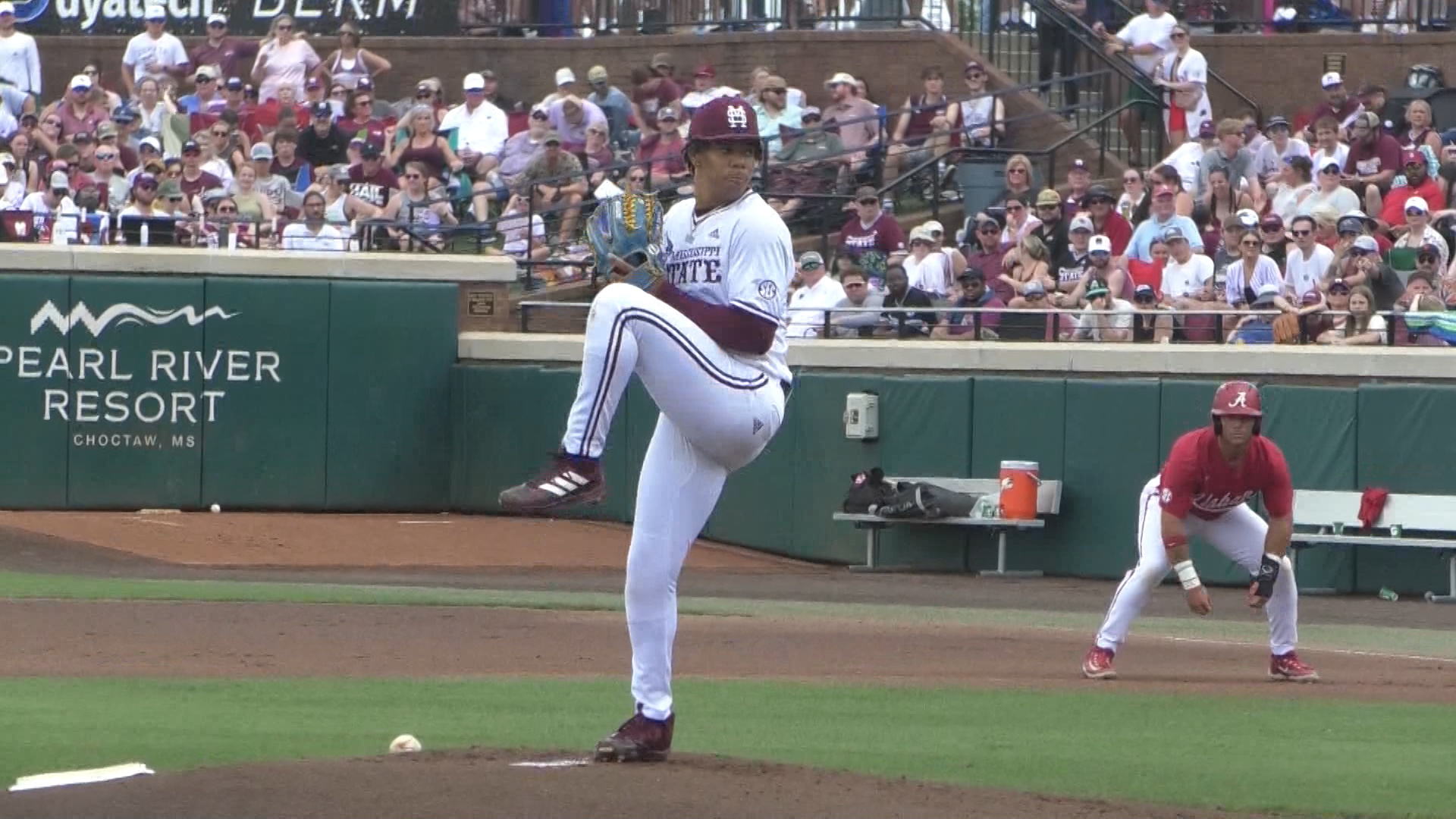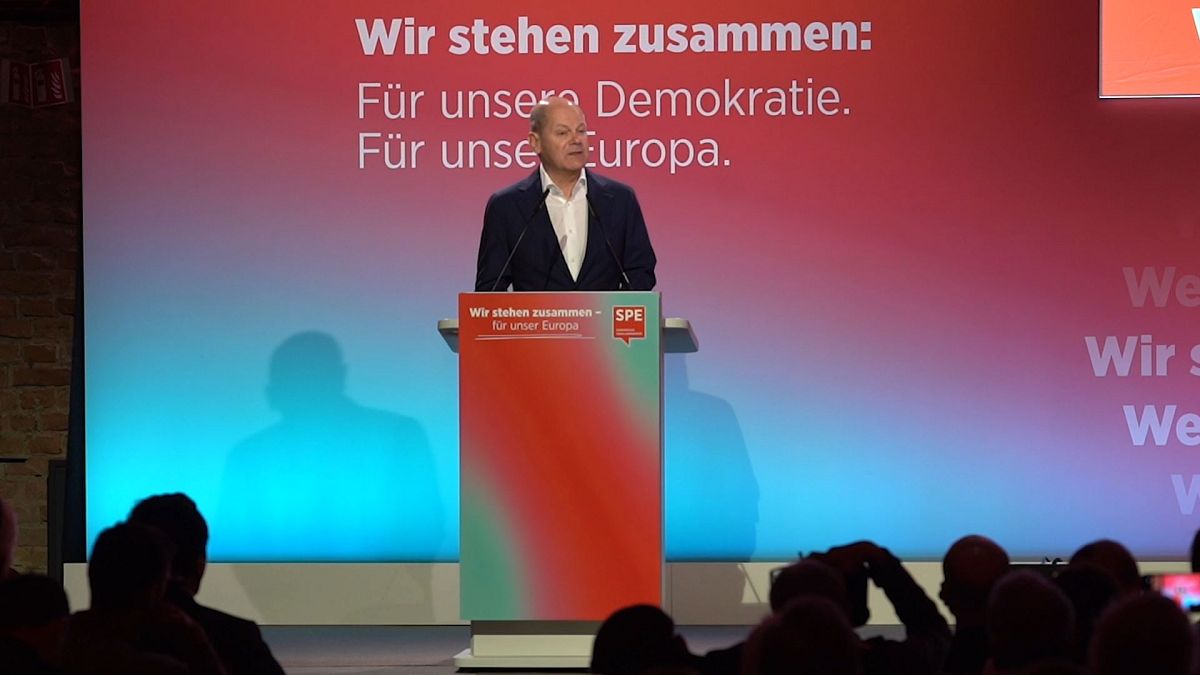Nebraska
Strong, at times severe, storms tonight, Friday and this weekend across Nebraska

Today starts a very active period of weather in which several rounds of showers and thunderstorms will be possible through the weekend.
First off today, we’ll continue to see spotty, light rain here and there in the morning before more showers move in from a line of thunderstorms currently off to the west. Better chance for heavy rain and storms will come after about 9pm Thursday night.
THURSDAY AFTERNOON/OVERNIGHT – SOUTHWEST NEBRASKA
The first of several rounds of severe weather across Nebraska is expected later this afternoon into the evening. For those under a Slight (Level 2 – yellow) risk, storms will first begin there and threaten mainly large hail, but a tornado or two and damaging wind will also be possible.

Stormcast below in one of the latest model runs has the timing of storms throughout the rest of the morning, Thursday evening and into Friday morning.
FRIDAY AFTERNOON/EVENING – EASTERN NEBRASKA
While Thursday is the first threat of severe weather nearby, Friday has the greater threat in eastern Nebraska. Just east of Lincoln, there’s an Enhanced (Level 3 – orange) risk for numerous severe storms possible that are more persistent and/or widespread, a few being intense.

Namely, the fact that both significant tornadoes (EF2 or higher) and significant hail (2″+) are possible Friday afternoon into the evening with this round of storms. Severe wind gusts could also be up to 70 mph.
Some clearing after the morning storms continue north will happen in southeast Nebraska, allowing the environment to destabilize and more thunderstorms to redevelop by the early afternoon. Stormcast has timing of this round below.
Especially after about 2 p.m., we’ll be watching for any and all severe threats in these storms. Be sure to be weather aware during this timeframe and adjust plans as needed.
SATURDAY AFTERNOON/NIGHT – SOUTHEAST NEBRASKA
Through the weekend, additional severe storms are anticipated to be impacting southeast Nebraska late Saturday afternoon. The higher threat of severe weather is southeast (including Falls City) in another Enhanced risk. All severe weather hazards will be possible.

A fourth found of thunderstorms on Sunday is possible after about 1 p.m. with a lower end tornado threat, hail up to 1″ in diameter and gusts up to 60 mph.
Stay weather aware and check back in frequently as the Storm Alert Team continues to update information.
Meteorologist Jessica Blum
Twitter: JessicaBlumWx
Facebook: JessicaBlumWx
YouTube: JessicaBlumWx

Nebraska
Nebraska Groundwater Levels Continue to Decline After Several Years of Drought

Groundwater levels in much of Nebraska continue to decline after several years of prolonged drought, according to the most recent statewide groundwater level report from the Conservation and Survey Division in the University of Nebraska–Lincoln’s School of Natural Resources.
Of the 4,822 wells measured statewide, 85% exhibited declines from spring 2022 to spring 2023.
Groundwater level changes in Nebraska are impacted by withdrawals, primarily for irrigation, and the amount of recharge from precipitation. The hotter and drier a growing season is, the less water is available for aquifer recharge and the more water is required for supplemental irrigation, thus, groundwater levels decline. Conversely, in years of above-average precipitation, more rainfall leads to greater recharge, less pumping is required for irrigation, and groundwater levels rise.
From January 2022 to January 2023, precipitation recorded at all 189 reporting stations in Nebraska was less than the 30-year normal. Below-average precipitation and an increased need for irrigation led to groundwater level declines of more than 20 feet at some locations. Moreover, because drought conditions have persisted across much of the state since mid-2020, groundwater levels have declined significantly in the last three years. On average, water depth in Nebraska wells has declined by 3.15 feet since spring 2020. Early reports for 2024 suggest this trend will continue in at least the eastern third of the state.
Despite recent groundwater level declines, Nebraska has significantly more groundwater resources than other states that sit atop the critical High Plains aquifer system. It also has a nation-leading system of groundwater management by virtue of its 23 natural resources districts, and groundwater use is regulated through regional management plans. In certain areas of the state, however, recent and long-term groundwater level declines are concerning. Some wells may eventually go dry or need to be drilled deeper to maintain groundwater availability.
Long-term change maps in the report still depict the abundance of groundwater in the state. Local changes in groundwater levels from predevelopment times (before the widespread use of groundwater for irrigation) range from increases of more than 120 feet to declines of about 130 feet. Groundwater levels in most of Nebraska have experienced a net change of less than 20 feet since predevelopment times. Parts of Chase, Perkins, Dundy and Box Butte counties, in contrast, have experienced major, sustained declines in groundwater levels due to a combination of factors. Irrigation wells are notably dense in these counties, annual precipitation is comparatively low, and there is little or no surface-water recharge to groundwater there.
The Conservation and Survey Division report was authored by Aaron Young, Mark Burbach, Susan Lackey, R. M. Joeckel, Jeffrey Westrop and Nawaraj Shrestha.
A free PDF of the report can be downloaded here. Print copies can be purchased for $7 at the Nebraska Maps and More Store, 3310 Holdrege St., or ordered by phone at 402-472-3471 or online.
Nebraska
Commentary: Nebraska and its ‘Great Plains Economic Opportunity Zone’

American businesses don’t have enough workers. The
U.S. Chamber of Commerce
notes that there are 1.7 million fewer workers in the labor force today compared to February 2020.
Great Plains states like the Dakotas, Montana, Nebraska and Wyoming have some of the
most severe labor shortages
in the nation. Now, the Nebraska legislature has opened the doors that are desperately needed to economic opportunity in the Great Plains, with the passage of legislation last month creating a unique economic opportunity zone in the middle of the country.
Like most of its neighbors, Nebraska employers need help finding workers.
Recent research
from the Kansas City Fed notes that the problem is worse in Nebraska than elsewhere: There are 2.5 job openings for every unemployed worker in Nebraska, almost twice the national average.
Recognizing the challenge is one thing. Taking common sense action to help improve the situation is much better. Legislators in Nebraska have done this with the passage of the measure. With the governor’s signature, the doors to opportunity are open in Nebraska.
Why is this legislation necessary? First, it addresses a barrier created by Nebraska’s occupational licensing requirements. If either of us wanted to drive in Omaha, our driver’s license would be recognized, and we could drive. Unfortunately, occupational licenses do not work this way. If licensed barbers from Iowa wanted to move to Nebraska and begin working, they would face significant delays and hardship in moving forward with their careers.
The new measure addresses this critical labor market friction for many occupations by implementing universal recognition. The bill will allow licensed workers with licenses in good standing for at least one year to have their licenses recognized. Nebraska joins 21 other states in taking steps to reduce barriers to interstate mobility — an important step when
licensing reduces workers moving between states
by about 7 percent.

Nebraska is not alone in moving forward with these reforms. There are
21 additional states
with some version of licensing recognition, and 39 states have passed licensing reforms for people with criminal records. Now, Nebraska has joined all of its neighbors in reforming universal recognition and most of its neighbors in reforming requirements for people with criminal records. Only South Dakota lags in permitting blanket barriers to workforce opportunities for workers trying to make a fresh start reintegrating into society, limiting opportunities there compared with nearby states.
Workers on the sidelines in Nebraska — perhaps underemployed or out of the labor force entirely — will now be able to work with fewer bureaucratic delays. This can have beneficial effects on the labor market in Nebraska and for workers moving between states in the region.
Research bears this out, showing that states that pass universal recognition experience a 1 percentage point gain in employment. Where do these new workers come from? Some come from other states; other workers come from the sidelines.
Research also shows fiscal benefits for states that adopted universal licensing recognition. These states saw a $1.7 million increase in adjusted gross income after enactment, compared with states that keep interstate licensing barriers in place.
These fiscal benefits come from households moving to states with licensing recognition, including households with dependents. Licensing recognition enables families to move to places of economic opportunity together.
However, there is always room for improvement. Limiting exclusions for several occupations is one way to make a good reform even better.
People with criminal records can also make a fresh start in Nebraska, creating the groundwork for a safer community. These reforms make it easier for people starting over to actually make a fresh start in the occupation of their choice.
Nebraska and its neighbors still license
dozens of lower-income occupations
. When licensing boards bar qualified individuals with criminal records from becoming licensed, even after applicants have completed the required education and training,
they can worsen public safety
instead of protecting it.
Nebraska’s law states that individuals can be barred from a license only when their criminal offense is directly related to the occupation or represents a substantial risk to public safety. Combined with greater due-process protections and setting time limits for how long a criminal offense can bar someone from working in a licensed occupation, this legislation significantly expands the economic opportunities of people trying to restart their lives.
In recent years, Nebraska has reduced some of its licensing requirements for lower-income occupations, reducing barriers to work for people just starting out in a profession. Together with these reforms, Nebraska policymakers have taken bold policy action to ensure employers will continue to have access to the workers they need.
Edward Timmons is a service associate professor and director of the
Knee Center for the Study of Occupational Regulation
at West Virginia University. Darwyyn Deyo is an associate professor of economics at San Jose State University and a senior research fellow with the Knee Regulatory Research Center at West Virginia University. They wrote this for
InsideSources.com
.
Nebraska
The need for environmental justice reparations in Omaha • Nebraska Examiner

The freeway that bifurcated North Omaha was marketed as an infrastructure development that would benefit all of Omaha. However, it solidified segregation, dramatically decreased Black homeownership and led to the amplification of environmental injustice.
For the last two years, I have been working as a research assistant for the Omaha Spatial Justice Project. As part of that project, I helped develop the project’s 1920 Black homeownership map, which shows a high concentration of homeownership along the North Freeway. Black homeownership reached a peak in 1950, when for the first time, there were more Black homeowners than renters.
Many homes were demolishedfor the freeway construction, stripping Black homeowners of their already limited access to generational wealth. The areas with rentals were left mostly untouched, whereas the neighborhoods that consisted primarily of homeowners were the ones replaced by the North Freeway. This demolished housing was not replaced, and due to persistent racism, Black homeowners received little to no compensation and found it difficult to purchase homes in other neighborhoods.
North Omaha was cut off from the rest of the city, resulting in limited access to public transportation and basic needs and services. Because of this, as Omaha developed further, food deserts, or areas with a decreased or complete lack of access to affordable healthy foods, manifested as a concern. This was exacerbated by the national trend of grocery stores shifting to suburban areas which began in the 1960s. While grocery stores still existed in North Omaha, new stores with healthier inventory were not accessible to neighborhood residents, resulting in disproportionate access to good quality food increasing health risks.
The North Freeway displaced thousands of Omaha’s Black residents, restricted access to homeownership, and led to an increased prevalence of environmental injustice issues that can be linked to present-day inequities. Because of this, there is a need for restorative justice.
In 2016, Catherine Millas Kaiman, a civil rights and environmental activist attorney, presented a national model for community-based reparations to achieve justice, by addressing issues of environmental injustice through funding awareness campaigns and education. Another path to justice is to provide reparation payments to relatives of individuals whose homes were destroyed. Affected individuals could make a claim examining how far below market rate compensation payments were to then make up the difference with interest.
Omaha’s construction of the North Freeway caused displacement, along with accompanying housing discrimination, amplifying environmental injustice. There is a critical need in North Omaha to address the problem of food deserts, including a lack of food availability as well as better access to affordable healthy food.
Omaha must come to terms with the damage done through a community-based reparations solution. Washington, D.C., provides a national example of how one city chose to confront the issue of food deserts. After identifying the locations of food deserts, the city offered financial incentives for businesses that opened grocery stores in those areas. The City of Omaha needs to implement a comprehensive policy solution to address this pressing need for the long-term health and stability of the community.
Any policy solution must address the historic wide-scale dismantling of Black homeownership through a housing reparations program. A national example of this is Evanston, Illinois, where the city clerk in 2019 made a case for housing reparations, and the first program in the country was implemented by the city council in 2021 to compensate the Black community for historical policies of segregation. It’s important to know whether the families that were affected by the destruction of their homes via the North Freeway believe that an injustice took place and reparations are needed.
Recently, there have been increasing plans and funding for development in North Omaha. Before the city implements redevelopment, we need to right the wrongs of history. As Omaha moves forward with new plans for development, there is a need to address the task of increasing Black residents’ access to homeownership. For Omaha to move on, we must address this difficult past.
The Omaha Spatial Justice Project is providing documentation of historic discrimination in Omaha by mapping racially restrictive covenants. Residents affected by housing segregation, the lack of access to homeownership and environmental injustice need a space to propose their solutions for reparations. The City Council and Mayor’s Office need to seriously consider and creatively implement these community policy solutions.
-

 News1 week ago
News1 week agoLarry Webb’s deathbed confession solves 2000 cold case murder of Susan and Natasha Carter, 10, whose remains were found hours after he died
-

 News1 week ago
News1 week agoFirst cargo ship passes through new channel since Baltimore bridge collapse
-

 World1 week ago
World1 week agoHaiti Prime Minister Ariel Henry resigns, transitional council takes power
-

 World1 week ago
World1 week agoSpanish PM Pedro Sanchez suspends public duties to 'reflect'
-

 World1 week ago
World1 week agoUS secretly sent long-range ATACMS weapons to Ukraine
-

 News1 week ago
News1 week agoAmerican Airlines passenger alleges discrimination over use of first-class restroom
-

 Education1 week ago
Education1 week agoVideo: Johnson Condemns Pro-Palestinian Protests at Columbia University
-

 Movie Reviews1 week ago
Movie Reviews1 week agoAbigail Movie Review: When pirouettes turn perilous



















